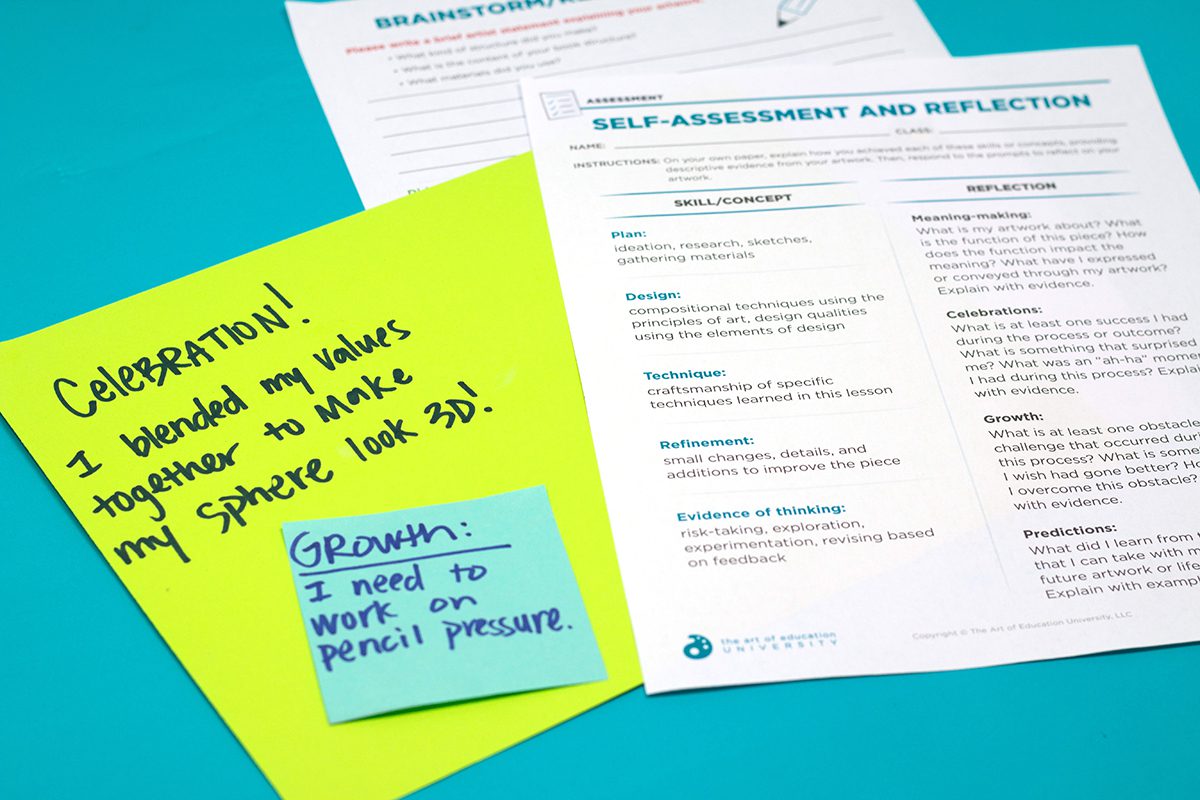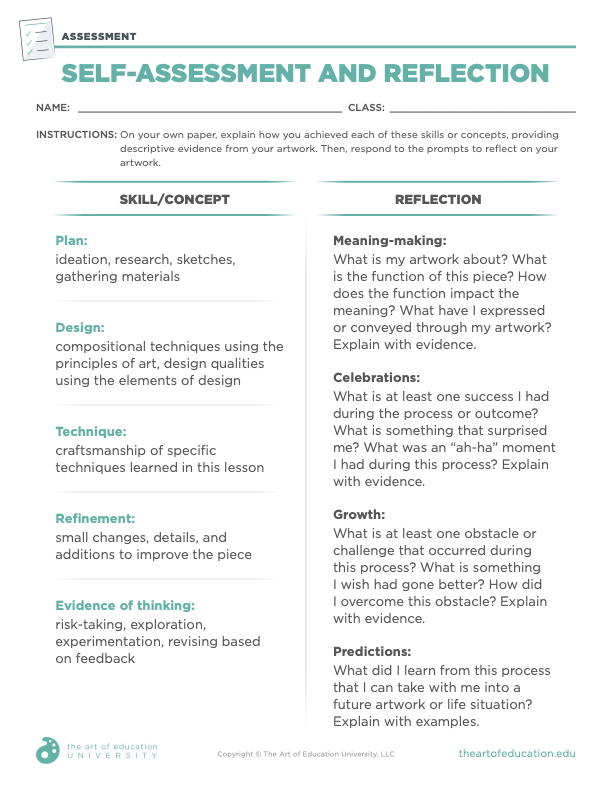One of the best things about being an art teacher is that we get to work with all kinds of students. Students with different interests, abilities, and personalities all have the opportunity to flourish in the art room. However, the ways they learn and thrive might look starkly different from student to student.
How often have you taught the same lesson to the same grade level and had a different experience? Maybe the lesson for one group takes longer than the other. Or, maybe students in one class have a livelier discussion than those in another. Because each class makeup consists of different individuals with varying personality types, the same lesson or activity will not reach everyone exactly the same way. How students participate, learn, and engage in the classroom setting will differ, in part, based on psychology and personality traits.
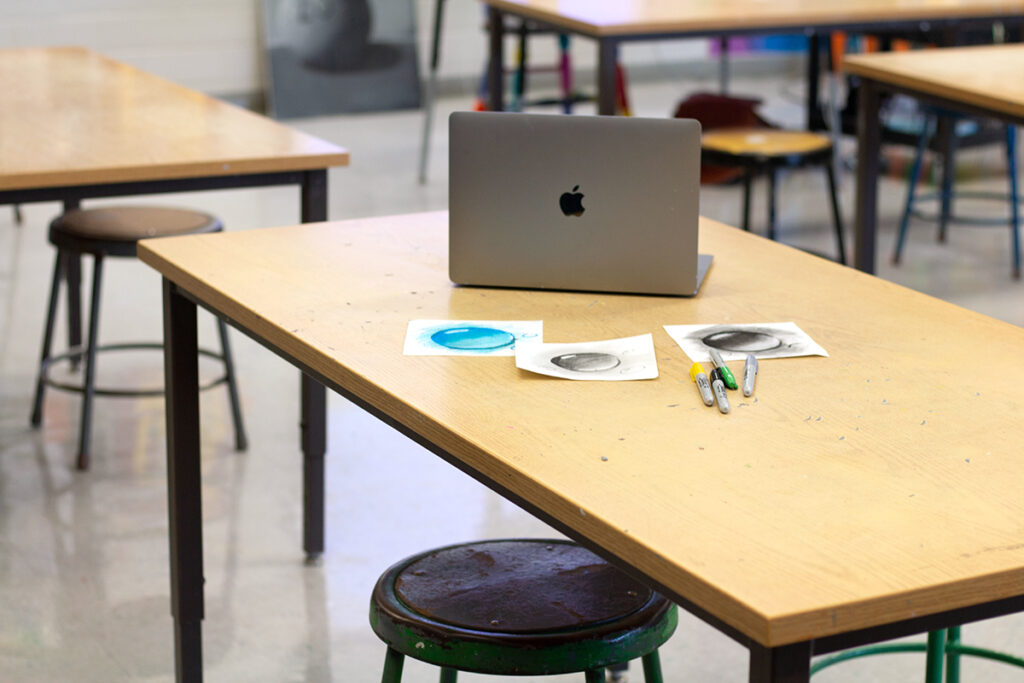
One of the most common personality trait groupings is extroversion and introversion. The way extroverts and introverts approach learning might not always be the same. The active nature of the art room lends itself well to extroverted students who thrive when doing activities with others and in front of others. We must provide opportunities for the same level of engagement for introverted learners. To do this, we might need to instill a few different strategies.
What is an introvert?
Carl Jung was one of the first psychologists to help us understand the terms extrovert and introvert. Research shows each person holds characteristics of both, but one is typically more dominant than the other. Some might even be ambiverts with balanced characteristics.
When using these terms, it’s important to understand what they mean. Here are some quick definitions to set up the rest of our discussion:
- Extrovert: An extrovert is someone who recharges and gains energy from external sources, such as social settings and activities.
- Introvert: Introvert in Latin means turning inward. This means introverts find their energy and need to recharge with alone time and reflection.
- Ambivert: An ambivert is someone who has a balance of extroversion and introversion.

What are the 4 types of introverts?
A 2011 study concluded that introversion consists of four different types. Let’s break them down and dig a bit deeper.
1. The Social Introvert
One misconception about introversion is that it is synonymous with shyness. A social introvert values solitude. Social situations can be draining for them. While in a large group setting, like a classroom, students might seem less outgoing or talkative. This may be because they don’t thrive in this type of setting. This type of student might embrace JOMO (the joy of missing out). Instead of pulling up a chair around a table of ten students working together in the art room, they might opt to sit alone or with one or two other students.
2. The Thinking Introvert
Have you ever been in a class with students trying to brainstorm one idea? Our extroverted students are probably the first to shout out ideas, whether they are good or bad. It might even appear that these students are dominating the conversation but not getting anywhere. Then, along comes the thinking introvert who takes on the persona of the “quiet genius.” They come up with a brilliant idea that is unanimously chosen by the class. While initially, it might seem like this student isn’t participating, they were internally reflecting, processing, and observing the entire time. These types of students are reflective and not reactive—they need time to think. This quality can be invaluable when developing insightful and creative ideas.
3. The Anxious Introvert
Just because someone is an introvert doesn’t mean they don’t enjoy social settings—it just takes a different kind of energy. Because of the nature of the art room, it is easy to identify those students who struggle with peer and social interactions. Often, a student’s anxiety may come off as nervousness or rudeness. These attitudes are often a defense mechanism because the student might not know how to act. These students are grateful to be assigned small, behind-the-scenes tasks by the teacher in a group setting. For instance, asking a student to pass out or pick up materials instead of expecting them to volunteer. This can help the student feel more comfortable. You might notice that in a chaotic large group activity, this type of student will flock to someone else who also wants to pull away from the group in a quieter setting.
4. The Restrained Introvert
The restrained introvert will appear reserved or unemotional, yet grounded. This type of student typically has their guard up, and it can take time to let others in. As an educator, small doses of daily one-on-one interaction will help this student feel more comfortable around you. Investing in them without overwhelming them will go a long way. These individuals thrive on a routine and might not adapt well to daily surprises.
What are 5 strategies to engage introverts in the art room?
A research study examining the correlation between creativity and personality types concluded there is no significant difference between the level of creativity in extroverts and introverts. Analyzing our students to look for extroverted or introverted behaviors doesn’t matter. What does matter is that we are providing ways to engage all of our students so they can be successful. If you find your classroom is more tailored toward the extroverts in the room, here are some ways you can also meet the needs of your introverts.
1. Establish quiet time.
Set aside a few minutes each class period to allow students to recharge. Because introverts might need more time to process and reflect, having dedicated time to think inwardly can help them relax and shift their mindset. Providing this time at the beginning of class can help students get in the zone to learn.

Here are some quiet-time routines to try:
- Start class with five minutes of mindfulness.
- Use bellringers or seatwork activities for students to begin each class.
- Start each class period with a new daily drawing activity.
2. Incorporate mindfulness activities.
Because introverts get their energy from within, they will be more likely to succeed with artmaking activities that allow for reflective practice. Incorporating mindfulness in your artmaking experiences will enable them to process and analyze their thoughts and feelings with a creative outlet. Rather than verbally expressing their feelings, they can visually show us!
Here are some activities you might try:
- The Perfect Self-Portrait Lesson to Start the School Year
- 5 SEL Lessons That Actually Work With Secondary Students
- No Drawing Skill Required! An Activity That Connects the Brain and Art
- How to Infuse Nature Into Your Studio Practices—Insights From Artist Emma Freeman
- How to Follow Your Heart When Making Art
Discover more information and resources in the Art Therapy Basics PRO Pack facilitated by art therapist Carolyn Tye.
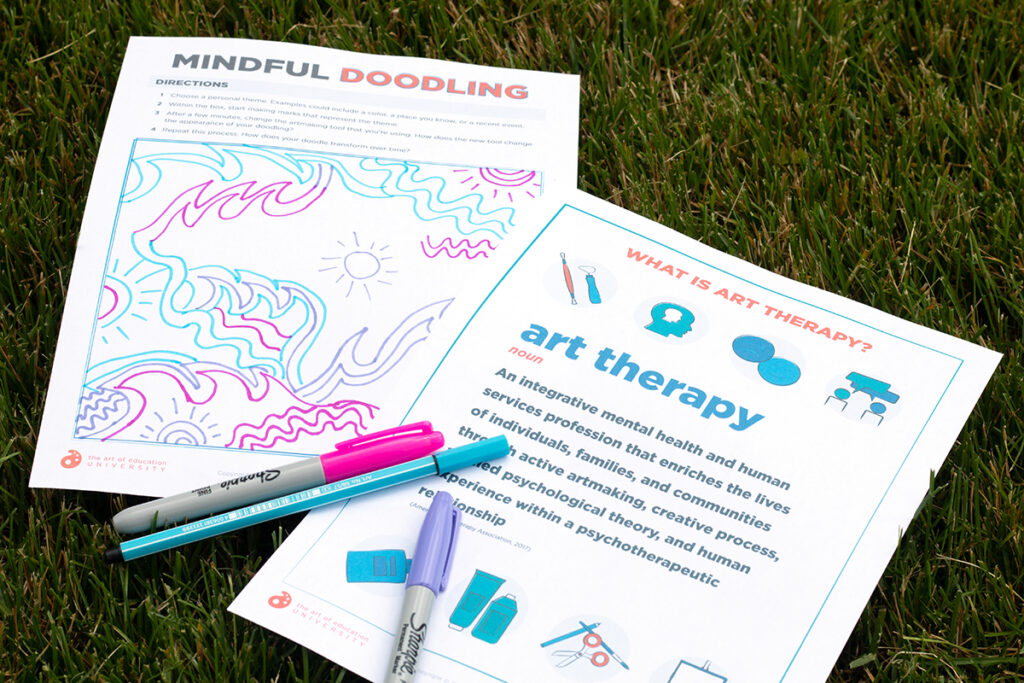
3. Use technology for participation.
The goal of classroom discussion should be to get as many of our students to participate as possible. Introverted students want to participate but might not feel comfortable talking in front of the entire class without proper time to think about their answers. One way to ensure everyone participates without the fear of being “wrong” is to use technology.
Here are some tools to consider:
These technology platforms allow students to participate from their own devices while you facilitate a discussion or share a presentation. This method of engagement helps you determine who is or isn’t paying attention. It also allows everyone to participate and share their thoughts, privately and sometimes at their own pace. For those students who might be a bit timid or reserved, it’s the perfect way to make them feel involved! The best thing is that all of these platforms are compatible with many presentation and video programs, such as Google Slides.
4. Prepare students for group work.
As we saw in the breakdown of the different types of introverts, some students will feel safer working in a group setting than others. Some students will not adapt well to the activity prompt, “Break into groups!”
If you plan on doing group work for a collaborative activity or lesson, here are a few things to consider:
- Give your students a heads-up about group work the day of or class before.
- Assign groups ahead of time.
- Use pairs instead of large groups.
- Assign roles within groups to provide focus and purpose.
All of these tips can help ease anxieties by allowing students time to prepare mentally. Another way to make group work appeal to the introvert in the art room is to allow students individual work time. For instance, you might have students begin collaborating, take a break to work individually, then come back to the larger group to discuss and bring ideas together.
5. Build in observation and reflection.
The introverted student might be drawn to more reflective and meditative activities that allow them to observe quietly. A daily reflection in the form of an exit ticket is a simple way to build this practice into your classroom. Whether digital, physical, or verbal, students can express their thoughts.
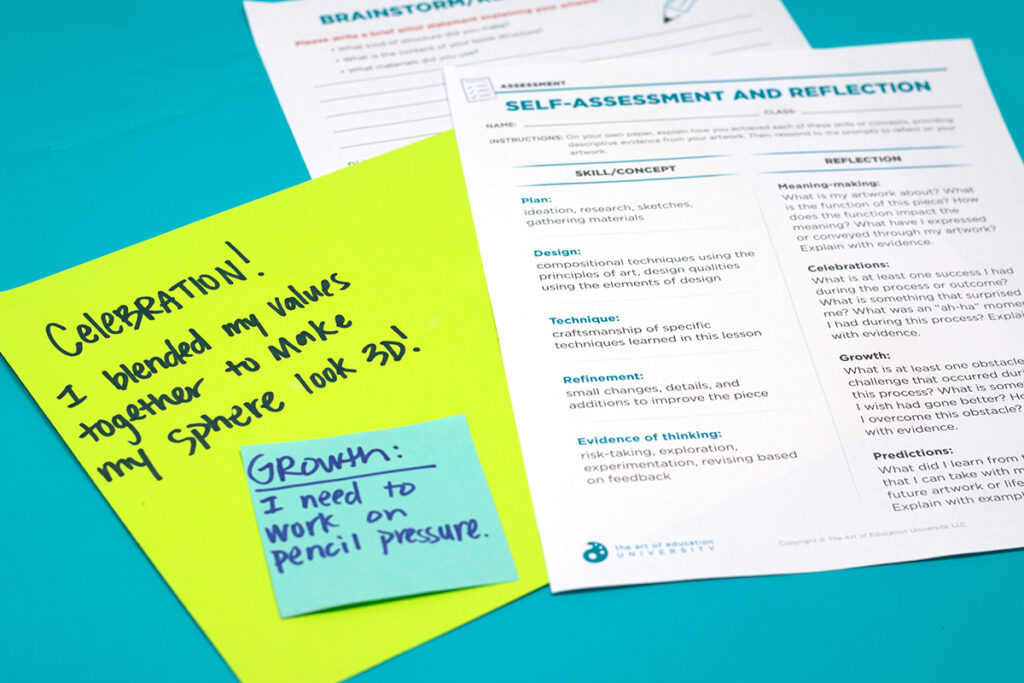
Using a reflection piece or artist statement does not have to be limited to the completion of an artwork. Instead, it could be a reflection of the day. This complimentary resource from our FLEX Curriculum is a simple yet effective way students can review and express their daily progress, challenges, wins, or process.
Download Now!
Every class we teach will consist of extroverts and introverts. The focus of this discussion is not to separate our students but to encourage us to reflect on our teaching practices. We want to strive to provide opportunities for all students to thrive in the art room. As we plan our lessons, we should be mindful not to tailor activities for one group of students over another. At the end of the day, what matters is that we use a variety of strategies to allow all students to find success as they comfortably engage in the art room.
How do you encourage participation with your introverted students?
Are your instructional strategies more tailored for extroverts or introverts?
Magazine articles and podcasts are opinions of professional education contributors and do not necessarily represent the position of the Art of Education University (AOEU) or its academic offerings. Contributors use terms in the way they are most often talked about in the scope of their educational experiences.
